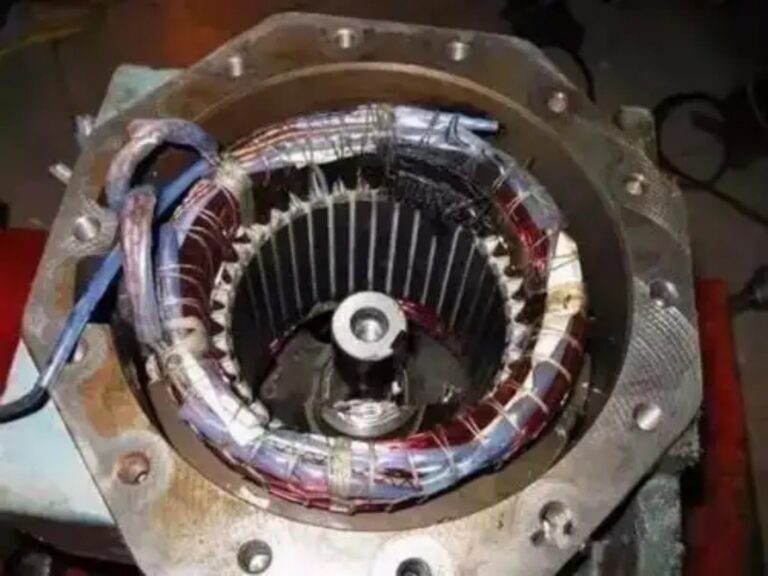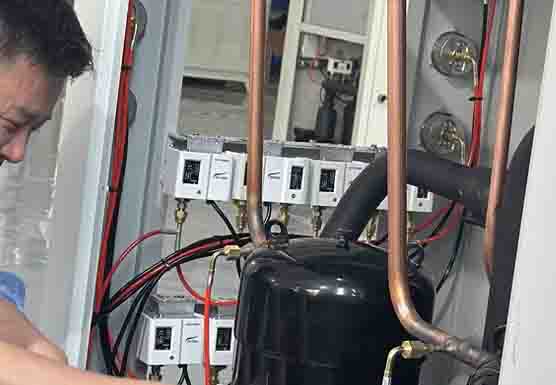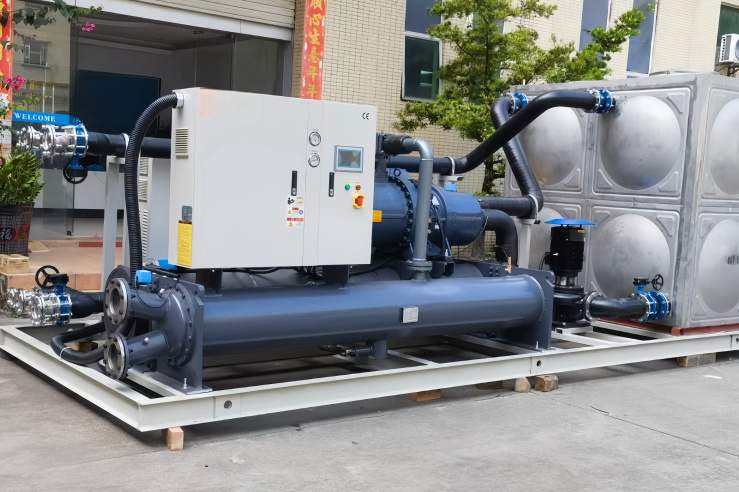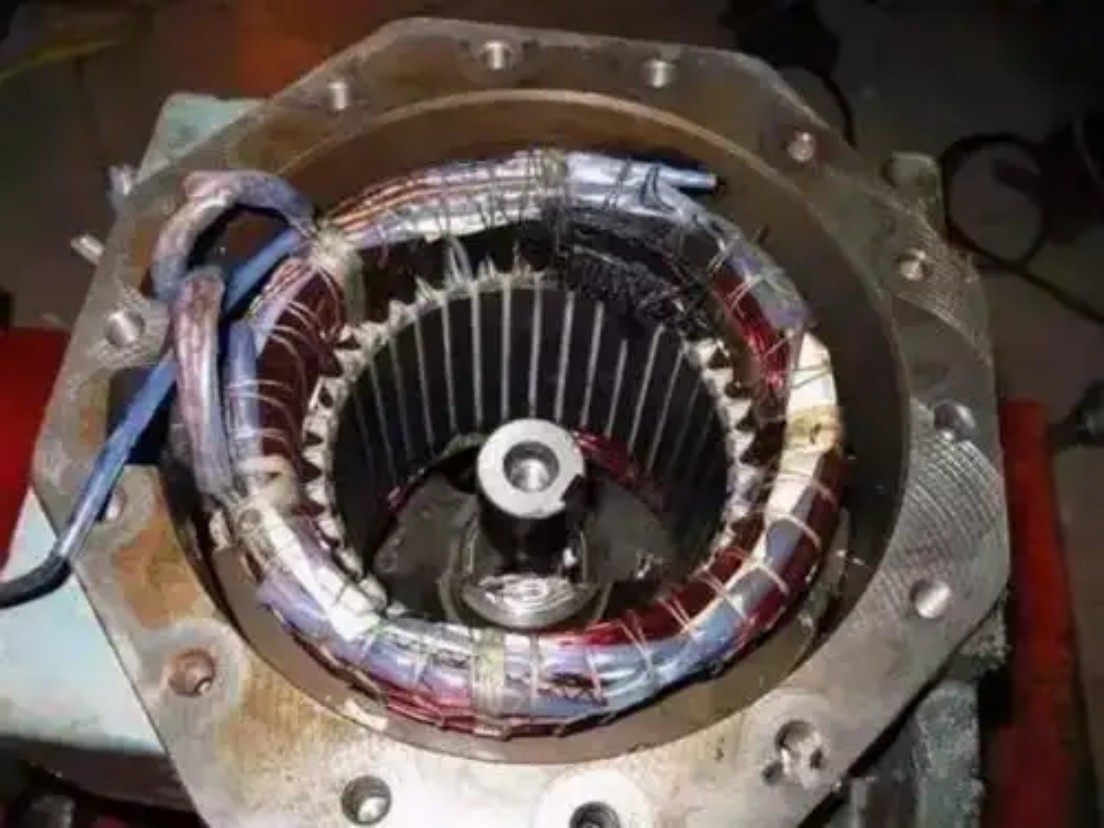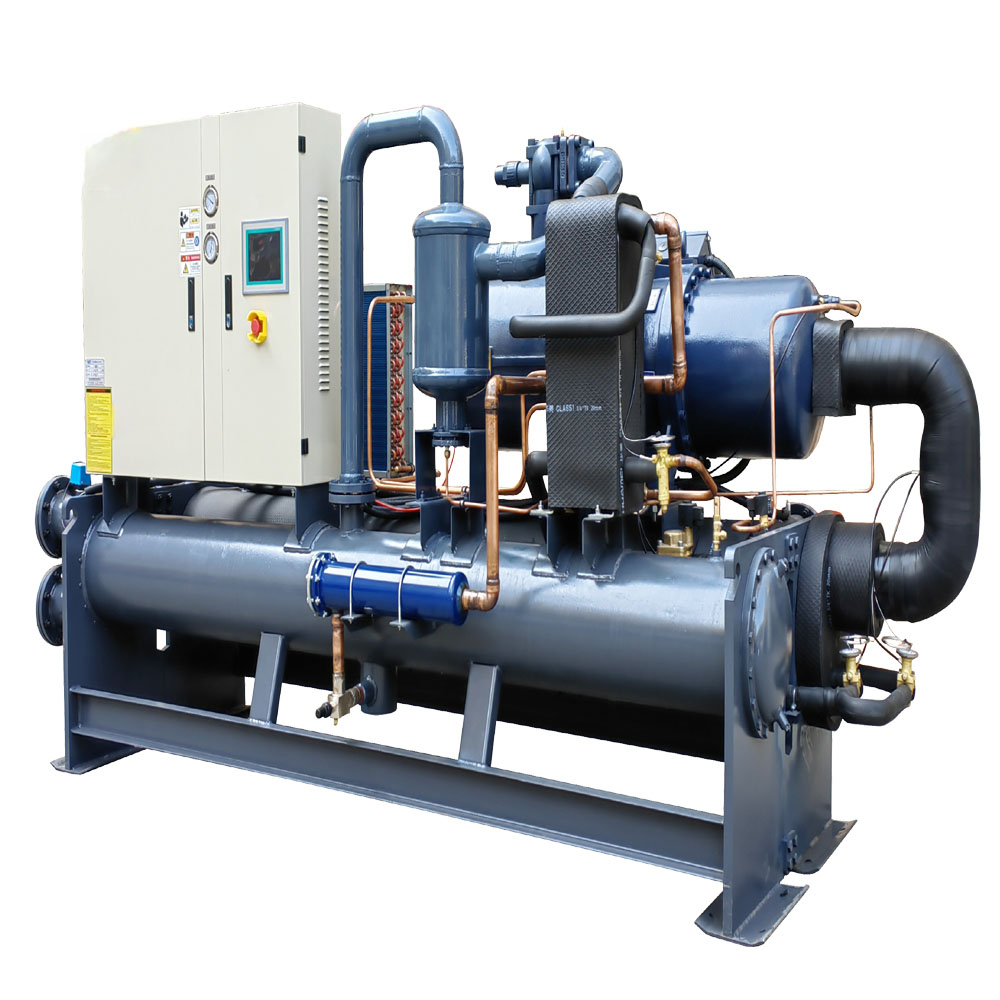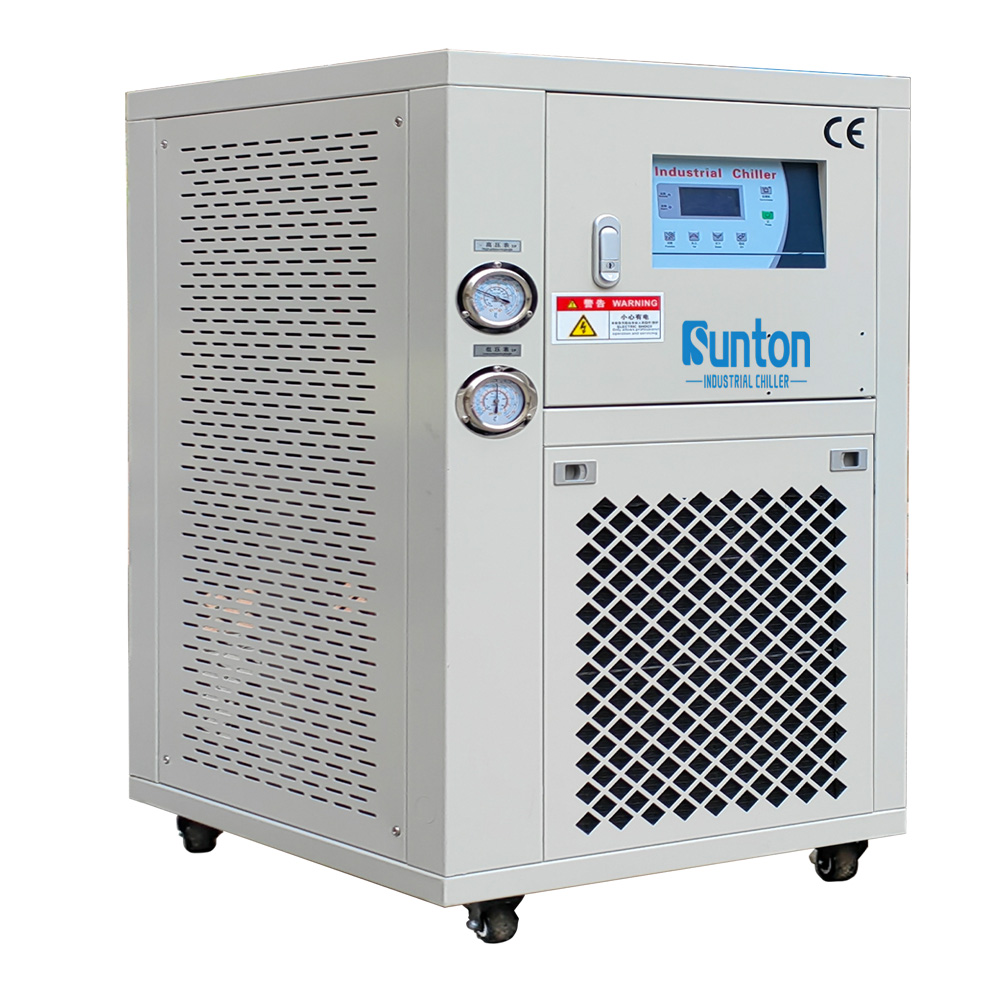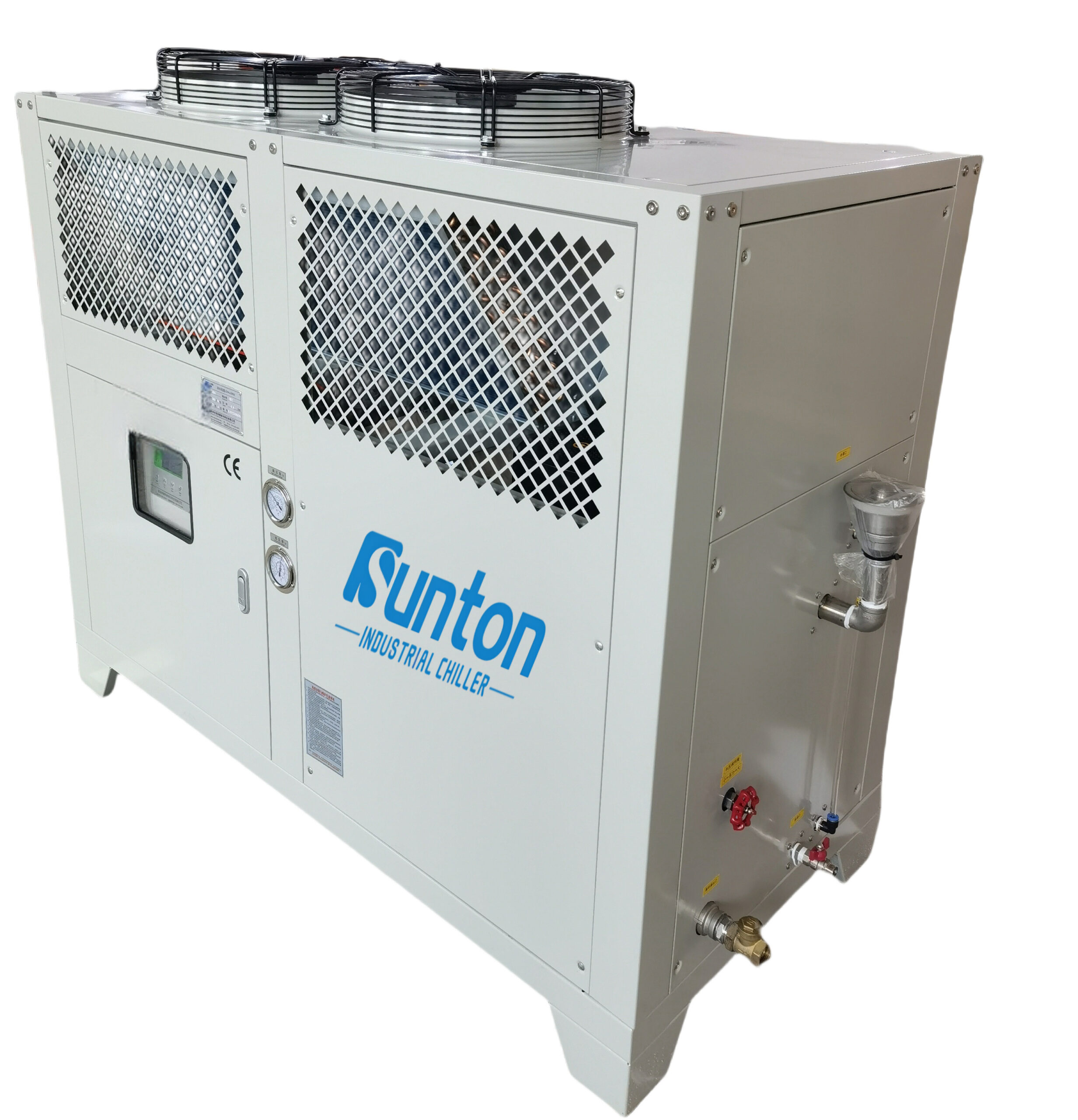-
Даліншань Індастріал Гуандун
Пивоварні гліколеві охолоджувачі: секрет ідеально охолодженого пива
Система охолодження пивоварні: секрет ідеально охолодженого пива
Правильно підібраний холодильний апарат може значно підвищити якість пива. світ крафтового пивоваріння, контроль температури - це все. Від бродіння до подачі, підтримання потрібної температури на кожному етапі пивоварного процесу має вирішальне значення для виробництва високоякісного пива. Глікольне пиво є популярним вибором серед крафтових пивоварів. Саме тут пивоварний гліколь. Якісний охолоджувач має вирішальне значення для підтримки потрібної температури під час процесу пивоваріння. Ці спеціалізовані охолоджувачі розроблені, щоб забезпечити надійне та ефективне охолодження. Багато пивоварень покладаються на передові лінії пива для ефективне охолодження. Розмір бочки важливий для визначення вимог до охолодження. обсяг холодильної машини має відповідати місткості барельерів вашої пивоварні, від невеликих пивоварень до великомасштабних виробничих потужностей. У цій статті ми розглянемо тонкощі пивоварних гліколевих охолоджувачів, розглянемо, як вони працюють, чому вони необхідні та як вибрати правильний для ваших потреб пивоваріння. Незалежно від того, чи є ви досвідченим пивоваром. Незалежно від того, прагнете ви розширитися чи тільки починаєте, цей посібник надасть вам цінну інформацію про світ пивоварень. охолодження пивоварні.
Опис статті
Зміст
Чому контроль температури такий важливий у пивоварінні?
Точний контроль температури має вирішальне значення на різних етапах процесу пивоваріння, впливаючи на смак, аромат і загальну якість кінцевого продукту. Ось чому:
- Ферментація: Дріжджі, мікроорганізми, відповідальні за бродіння, дуже чутливі до коливань температури. Підтримка правильної температури бродіння забезпечує постійне та передбачуване бродіння, що веде до бажаного вмісту алкоголю та профілю смаку. Різні штами дріжджів мають певні оптимальні температурні діапазони.
- Охолодження сусла: Після кип’ятіння сусло (цукристу рідину, видобуту з солодового ячменю) необхідно швидко охолодити до відповідної температури бродіння. Охолодження сусла має бути швидким, щоб запобігти небажаним присмакам. Швидке та ефективне охолодження сусла має важливе значення для підтримки потрібної температури під час процесу пивоваріння. мінімізує ризик забруднення та неприємних присмаків.
- Кондиціонування та зберігання: Після завершення бродіння пиво часто проходить період кондиціонування при певній температурі, щоб аромати дозріли та стабілізувалися. Пиво також зберігається холодним, щоб зберегти його свіжість і якість. Резервуар потрібно підтримувати холодним за допомогою ефективних охолоджувачів g&d, що забезпечує оптимальну якість. до тих пір, поки не настане час заварюватися.
Нестабільна або неправильна температура може призвести до різних проблем, у тому числі до зупинки бродіння, неприємних присмаків, псування та марних партій. Надійна система охолодження є важливою для роботи пивоварні.
Що таке гліколевий охолоджувач і як він працює на пивоварні?
Гліколевий чиллер — це спеціалізована система охолодження, яка використовує суміш води та пропіленгліколю як охолоджувач. Гліколь — харчовий антифриз, який дозволяє охолоджувальній рідині досягати температури нижче точки замерзання води без замерзання, що робить його ідеальним для пивоваріння.
Ось як це працює на пивоварні:
- Холодильник охолоджує суміш гліколю до потрібної температури, як правило, від 28 до 32°F (від -2 до 0°C).
- Потім охолоджений гліколь перекачується через мережу ізольованих труб або гліколевих ліній до різних частин пивоварного обладнання, наприклад резервуарів для бродіння, резервуарів для кондиціонування та теплообмінників.
- Гліколь поглинає тепло в процесі пивоваріння, допомагаючи підтримувати бажану температуру. Гліколева система охолодження дуже ефективна для підтримки правильної температури.
- Нагрітий гліколь повертається в холодильну машину, де знову охолоджується за допомогою правої холодильної машини, і цикл повторюється.
Пивоварні гліколеві охолоджувачі — це тип охолоджувального обладнання, яке пивовари використовують для охолодження пива. Чиллер працює за допомогою холодоагенту для відведення тепла від рідини, у даному випадку суміші води та гліколю. Потім охолоджений гліколь циркулює через змійовики з нержавіючої сталі або кожух навколо ферментаційної ємності, поглинаючи тепло та зберігаючи бажану температуру пива. Потім пивоварному заводу потрібно буде вибрати правильний розмір гліколевого охолоджувача, щоб забезпечити належне охолодження резервуарів.
Типи гліколевих чиллерів для пивоварень
Гліколеві холодильні машини для пивоварень мають різні конфігурації, але найпоширенішими є:
- Чиллери з повітряним охолодженням: Ці чиллери використовують навколишнє повітря для розсіювання тепла від холодоагенту. Зазвичай їх легше встановлювати та обслуговувати, ніж чиллери з водяним охолодженням, але вони можуть бути менш енергоефективними в жаркому кліматі. Дослідіть наш Гвинтова охолоджувальна машина з повітряним охолодженням моделі для потреб вашої пивоварні.
- Чиллери з водяним охолодженням: Ці чиллери Ви можете використовувати воду з системи тривалого забору, щоб підвищити ефективність охолодження. градирню або інше джерело для розсіювання тепла. Вони, як правило, більш енергоефективні, ніж моделі з повітряним охолодженням, особливо в теплішому кліматі, але потребують джерела води та додаткової сантехніки. наш Гвинтовий охолоджувач води з водяним охолодженням є потужним варіантом для великих пивоварень.
- Портативні чиллери: Менші, автономні блоки, які можна легко переміщати по пивоварні. Вони ідеально підходять для невеликих операцій або для охолодження окремих резервуарів. наш Гліколеві охолоджувачі доступні в різних розмірах.
- Чиллери спліт-системи: Ці чиллери відокремлюють блок компресора та конденсатора від блоку випарника, що забезпечує більш гнучкі варіанти встановлення, особливо на пивоварнях з обмеженим простором. Перевірте наш Спіральний охолоджувач води з повітряним охолодженням для рішення спліт-системи.
Вибір між моделями з повітряним і водяним охолодженням часто залежить від таких факторів, як клімат, наявність води та витрати на електроенергію.
Вибір холодильної машини правильного розміру для вашої пивоварні
Вибір гліколевої холодильної машини правильного розміру має вирішальне значення для ефективної та ефективної роботи пивоварні. Чиллер із заниженим розміром важко буде підтримувати бажану температуру, тоді як купівля та експлуатація великого охолоджувача коштуватиме невиправдано дорогих витрат. Чиллери призначені для забезпечення певної кількості охолодження.
Ось основні фактори, які слід враховувати:
- Кількість і розмір баків: Чим більше у вас резервуарів і чим вони більші, тим більша потужність охолодження вам знадобиться. Ви повинні враховувати розмір ваших резервуарів для бродіння, а також будь-яких інших посудин, які потребують охолодження, таких як резервуари для бриту або резервуари для подачі.
- Графік ферментації: Якщо ви плануєте ферментувати кілька партій одночасно, вам знадобиться холодильна машина з достатньою потужністю, щоб впоратися з піковим тепловим навантаженням під час бродіння.
- Вимоги до охолодження сусла: Холодильник повинен мати можливість швидко й ефективно охолоджувати сусло від температури кипіння до температури бродіння. Охолоджувач сусла може бути окремим обладнанням, або гліколевий охолоджувач також може впоратися з цим завданням. Ви повинні вирішити, чи потрібен вам гліколевий охолоджувач, який також обслуговує охолодження сусла.
- Температура навколишнього середовища: Вищі температури навколишнього середовища знижують ефективність холодильних машин із повітряним охолодженням і можуть вимагати більшої потужності охолодження.
- Майбутнє розширення: Подумайте про потенційне зростання вашої пивоварні та виберіть холодильну машину, яка зможе розширюватися в майбутньому. Часто рентабельніше заздалегідь придбати холодильну машину трохи більшого розміру, ніж замінювати менший блок пізніше.
Основні характеристики, на які слід звернути увагу в пивоварному гліколевому охолоджувачі
Вибираючи гліколевий охолоджувач для пивоварні, враховуйте такі важливі характеристики:
- Надійний компресор: Компресор є серцем холодильної машини, а високоякісний, енергоефективний компресор необхідний для надійної роботи та низьких витрат на електроенергію.
- Точний контроль температури: Шукайте холодильну машину зі складною системою керування, яка може підтримувати точні та стабільні температури у вузькому діапазоні. Точний контроль температури важливий для постійного бродіння та якості продукту.
- Міцна конструкція: Середовище пивоварні може бути складним, тому вибирайте холодильну машину, виготовлену з міцних матеріалів, таких як нержавіюча сталь, щоб витримати важкі умови щоденного використання.
- Резервування: Для великих операцій розгляньте холодильну машину з резервними компонентами, такими як подвійні компресори або насоси, щоб забезпечити безперервну роботу в разі відмови компонента. Система з двома насосами допомагає забезпечити резервування.
- Простота обслуговування: Виберіть холодильну машину з легкодоступними компонентами та чіткими інструкціями з обслуговування, щоб мінімізувати час простою та спростити обслуговування.
- Енергоефективність: Шукайте чиллери з високими показниками енергоефективності, щоб мінімізувати експлуатаційні витрати. Розгляньте такі функції, як приводи зі змінною швидкістю та передові технології охолодження, щоб максимально підвищити енергоефективність.
Встановлення та обслуговування вашої системи охолодження гліколю
Правильне встановлення та технічне обслуговування мають вирішальне значення для забезпечення тривалої роботи та надійності вашої системи охолодження гліколю.
- Професійна установка: Настійно рекомендується, щоб вашу холодильну систему встановлювали кваліфіковані спеціалісти з холодильних установок, які мають досвід роботи в пивоварних заводах. Вони гарантують, що холодильна машина має відповідний розмір, труби та проводку для оптимальної роботи.
- Ізоляція: Усі гліколеві лінії повинні бути належним чином ізольовані, щоб мінімізувати приплив тепла та зберегти енергоефективність. Ізолюйте труби, щоб запобігти утворенню конденсату та втраті енергії. Належним чином ізолюйте всі гліколеві труби та фітинги.
- Регулярні перевірки: Необхідно проводити регулярні перевірки, щоб перевірити наявність витоків, рівень холодоагенту, роботу насоса та загальну продуктивність системи.
- Прибирання: Теплообмінники та інше обладнання мають бути оптимізовані для використання з вашою довгостроковою системою. компоненти слід періодично очищати, щоб видалити будь-які накопичення накипу або сміття, які можуть знизити ефективність.
- Технічне обслуговування гліколю: Суміш гліколю слід регулярно перевіряти та замінювати за потреби, щоб зберегти її антифризні властивості та запобігти корозії.
Оптимізація енергоефективності вашої системи охолодження пивоварні
Робота пивоварні може бути енергоємною, і охолодження часто є значним внеском у витрати енергії. Ось кілька порад щодо максимальної енергоефективності:
- Правильний розмір: Як згадувалося раніше, вибір холодильної машини правильного розміру має вирішальне значення для енергоефективності. Холодильник великого розміру вмикатиметься та вимикатиметься частіше, що призведе до збільшення споживання енергії.
- Ізоляція: Належна ізоляція всіх гліколевих труб і резервуарів мінімізує надходження тепла та зменшує навантаження на холодильну машину.
- Приводи зі змінною швидкістю: Розгляньте можливість використання охолоджувачів g&d для контролю температури. чиллери з приводами із змінною швидкістю на компресорах і насосах, які можуть регулювати свою продуктивність залежно від потреби, заощаджуючи енергію в періоди низького навантаження.
- Рекуперація тепла: Дослідіть варіанти рекуперації відпрацьованого тепла від холодильної машини чи інших процесів пивоварні для попереднього підігріву води для очищення чи інших цілей.
- Регулярне технічне обслуговування: Добре обслуговувана система охолодження працює ефективніше.
Налаштуйте свій гліколевий холодильник для конкретних потреб пивоваріння
У той час як стандартні гліколеві чиллери задовольняють потреби багатьох пивоварень, деякі операції можуть вимагати індивідуальних рішень. Нижче наведено кілька поширених варіантів налаштування для вашої системи довгострокового малювання:
- Кілька температурних зон: Якщо вам потрібно підтримувати різні температури в різних резервуарах або процесах, ви можете налаштувати свою холодильну систему з кількома температурними зонами, кожна з яких має власний насос і систему керування. Якщо вам потрібен гліколевий холодильний агрегат, який може охолоджуватися до кількох температур, вам потрібно буде налаштувати його відповідно.
- Резервні системи: Для критично важливих застосувань, де час простою є неприйнятним, можна спроектувати резервну холодильну систему з двома чи більше холодильними машинами, що працюють паралельно, забезпечуючи резервну роботу в разі збою.
- Спеціалізовані теплообмінники: Залежно від ваших конкретних потреб вам можуть знадобитися спеціалізовані теплообмінники, такі як паяний пластинчастий теплообмінник для охолодження сусла або кожухотрубний теплообмінник для великих резервуарів.
- Інтеграція системи управління: Систему керування вашої холодильної машини можна інтегрувати із загальною системою керування вашої пивоварні, забезпечуючи централізований моніторинг і контроль усіх процесів пивоваріння.
Роль гліколевих охолоджувачів на різних етапах пивоваріння
Охолоджувачі з гліколем відіграють важливу роль у процесі пивоваріння:
- Охолодження сусла: Після кип'ятіння сусло необхідно швидко охолодити до відповідної температури бродіння. Гліколевий охолоджувач, який часто поєднується з теплообмінником або спеціальним охолоджувачем сусла, виконує це швидко та ефективно. Це може бути пластинчастий чиллер або протитечійний охолоджувач.
- Контроль температури бродіння: Підтримка постійної температури бродіння має вирішальне значення для здоров’я дріжджів і розвитку бажаних ароматів. Охолоджувачі гліколю циркулюють охолоджений гліколь через сорочки або змійовики у ферментері, точно регулюючи температуру.
- Аварійне охолодження: Після бродіння пиво часто швидко охолоджують до температури, близької до точки замерзання, щоб допомогти просвітлити пиво та підготувати його до пакування.
- Холодне зберігання: Готове пиво зазвичай зберігають у холоді, щоб зберегти його свіжість і якість. Гліколеві чиллери можна використовувати для підтримки температури в холодильних камерах або резервуарах. Якщо ви подаєте пиво прямо з резервуару, то вам потрібно буде підтримувати низьку температуру в резервуарі.
Майбутні тенденції в технології охолодження пивоварні
Сфера охолодження пивоварень постійно розвивається. Ось деякі помітні тенденції:
- Удосконалені холодоагенти: Промисловість рухається до більш екологічних холодоагентів із меншим потенціалом глобального потепління.
- Інтелектуальне керування: Інтеграція з інтелектуальними технологіями, що дозволяє здійснювати дистанційний моніторинг, прогнозне технічне обслуговування та оптимізацію продуктивності чиллера на основі даних.
- Відновлення енергії: Збільшення уваги до рекуперації відпрацьованого тепла від холодильної машини та інших процесів пивоварні для підвищення загальної енергоефективності.
- Модульні системи: Модульні конструкції холодильних машин, які пропонують більшу гнучкість щодо потужності та конфігурації, дозволяючи пивоварням легко масштабувати свої системи охолодження за потреби.
поширені запитання
Який розмір гліколевої холодильної машини мені потрібен для моєї пивоварні?
Розмір гліколевого охолоджувача залежить від кількох факторів, включаючи кількість і розмір резервуарів, графік бродіння, потреби в охолодженні сусла та температуру навколишнього середовища. Щоб визначити відповідний розмір для ваших конкретних потреб, найкраще проконсультуватися з експертом із пивоварного холодильного обладнання.
Як часто мені слід міняти гліколь у моїй системі?
Суміш гліколю слід регулярно перевіряти та змінювати відповідно до рекомендацій виробника. Як правило, його слід замінювати кожні 1-3 роки або частіше, якщо перевірка вкаже на необхідність.
Чи можна використовувати гліколевий чиллер для обігріву та охолодження?
У той час як гліколеві чиллери призначені в основному для охолодження, деякі моделі можна налаштувати також на обігрів. Зазвичай це передбачає реверсування потоку холодоагенту та використання холодильної машини як теплового насоса.
Скільки коштує пивоварний гліколевий холодильник?
Вартість пивоварного гліколевого охолоджувача значно варіюється залежно від розміру, характеристик і виробника. Маленькі портативні пристрої можуть коштувати кілька тисяч доларів, тоді як великі індивідуальні системи можуть коштувати десятки тисяч доларів.
Яка різниця між гліколевим чиллером і водяним чиллером?
Гліколевий чиллер використовує суміш води та пропіленгліколю як охолоджувач, тоді як водяний чиллер використовує лише воду. Гліколь дозволяє охолоджувальній рідині досягати температури нижче точки замерзання води без замерзання, що робить його ідеальним для таких застосувань, як пивоваріння, яке вимагає низьких температур.
Які переваги використання гліколевого охолоджувача на пивоварні?
Гліколеві холодильні машини пропонують низку переваг для пивоварень, зокрема точний контроль температури, ефективне охолодження, здатність досягати низьких температур і універсальність у різних сферах пивоваріння.
Висновок
- Температура короля: Точний контроль температури необхідний для виробництва високоякісного пива.
- Гліколеві холодильні машини є ключовими: Гліколеві чиллери забезпечують надійне та ефективне охолодження, необхідне на різних етапах процесу пивоваріння.
- Розмір має значення: Виберіть холодильну машину правильного розміру, виходячи з конкретних потреб вашої пивоварні та майбутніх планів розвитку.
- Особливості для ефективності: Шукайте такі функції, як енергоефективні компресори, точний контроль температури та міцна конструкція.
- Технічне обслуговування має вирішальне значення: Регулярне технічне обслуговування забезпечує максимальну продуктивність вашої холодильної системи та запобігає дорогим простоям.
- Налаштуйте для своїх потреб: Спробуйте налаштувати свій гліколевий холодильний агрегат за допомогою таких функцій, як кілька температурних зон, резервні системи та спеціалізовані теплообмінники.

